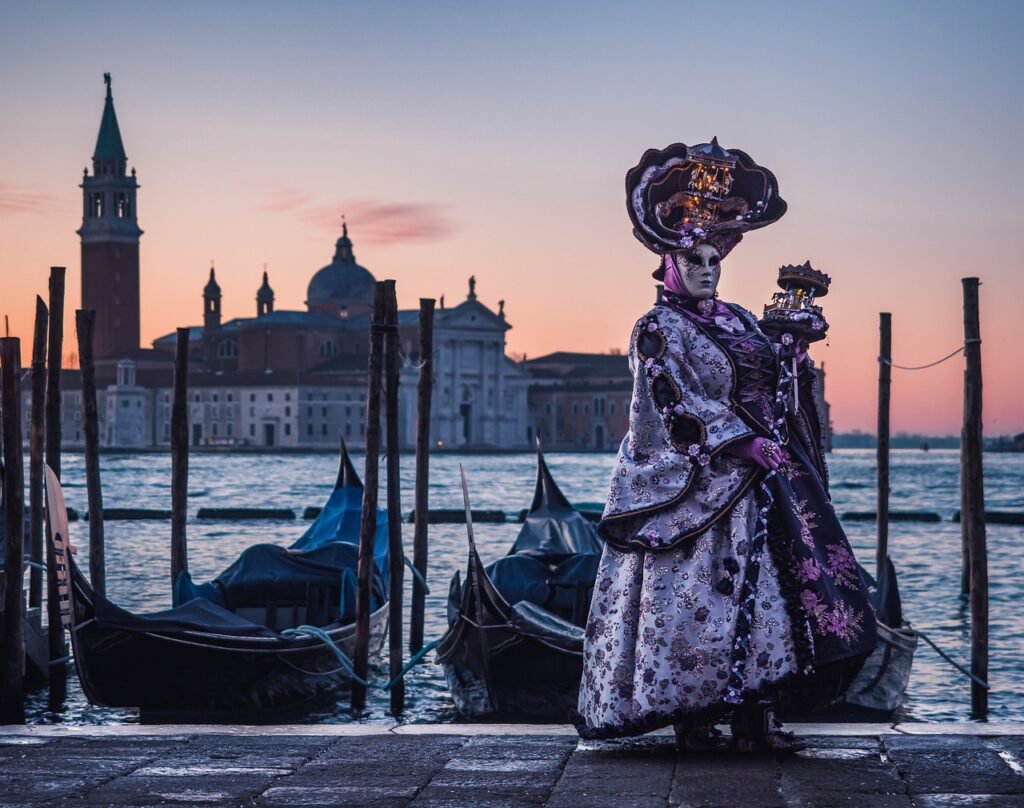Italy, with its rich history and breathtaking landscapes, is a land of vibrant festivals that capture the essence of its culture. From the iconic Carnival of Venice to the thrilling Palio di Siena, these celebrations are deeply woven into the fabric of Italian life, preserving heritage and fostering community spirit. Welcome to Italian Festivals: The Ultimate Guide.
Festivals in Italy are more than events; they are vital cultural expressions, showcasing the nation’s love for festivity. This ultimate guide explores the most iconic and unique Italian festivals, offering a glimpse into the heart of Italy’s unparalleled cultural heritage. Discover the magic of these celebrations and why they are an essential part of the Italian experience.
This post may contain affiliate links to things like hotels, tours or products. These help us earn a small commission at no additional charge to you and help keep the lights on at Destination Someplace.
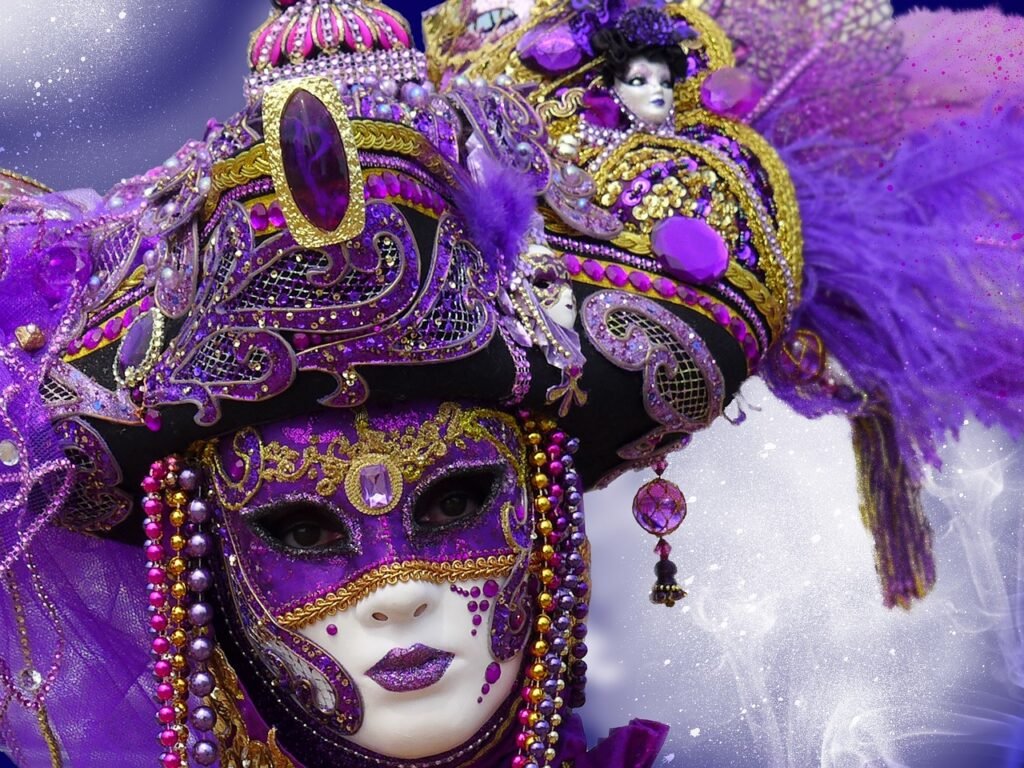
Historical Festivals
Carnival of Venice (Carnevale di Venezia)
Description and History
The Carnival of Venice, one of Italy’s most famous and historical festivals, dates back to the 12th century. It became an official event in the Renaissance, celebrated with grand parades and elaborate parties. Revived in the late 20th century, the carnival continues to captivate visitors with its rich traditions and enchanting atmosphere.
Famous Masks and Costumes
Masks are the hallmark of the Carnival of Venice, with their origins in ancient theatre and commedia dell’arte. Participants don intricately designed masks and elaborate costumes, transforming the city into a living canvas of artistry and imagination. The Bauta, Moretta, and Volto are among the most iconic mask styles seen during the festivities.
Key Events and Activities
The carnival kicks off with the “Flight of the Angel,” where a performer descends from the Campanile di San Marco. Highlights include masked balls, costume contests, and parades along the canals. Street performers, musicians, and artisans add to the lively atmosphere, creating an unforgettable experience for all attendees.
Palio di Siena
Historical Background
The Palio di Siena is a centuries-old horse race held in the Piazza del Campo, dating back to medieval times. Initially a military training exercise, it evolved into a fiercely competitive event among the city’s contrade (districts), symbolizing local pride and honor.
The Horse Race and Its Significance
Held twice a year on July 2nd and August 16th, the race features ten horses and riders, each representing a contrada. The race lasts only about 90 seconds, but its impact resonates deeply within the community. Winning the Palio is a source of immense pride and is celebrated with great fervor.
Festivities and Traditions
The Palio is preceded by a series of events, including the drawing of lots to assign horses to contrade and the Corteo Storico, a historical parade featuring medieval costumes and pageantry. After the race, the winning contrada hosts a victory celebration that includes feasting, singing, and parading the Palio banner through the streets.
Battle of the Oranges (Ivrea)
Historical Context
The Battle of the Oranges in Ivrea is a unique festival with roots in the Middle Ages. It commemorates a local rebellion against a tyrannical lord, symbolizing the fight for freedom and justice. The event has evolved into a vibrant and theatrical re-enactment.
Description of the Event
The battle takes place during the last three days of the Carnival of Ivrea. Participants, divided into nine teams, engage in a massive orange-throwing battle in the town’s main squares. The “battle” is a playful yet intense event, with thousands of people hurling oranges at each other, representing the rebellious townspeople’s fight against oppression.
Cultural Significance
The Battle of the Oranges is more than a fruit fight; it’s a deeply rooted tradition that fosters community spirit and remembrance of local history. The event also includes parades, music, and the burning of the scarli (towers of wood), culminating in a grand celebration that unites the town in its shared heritage and collective joy.
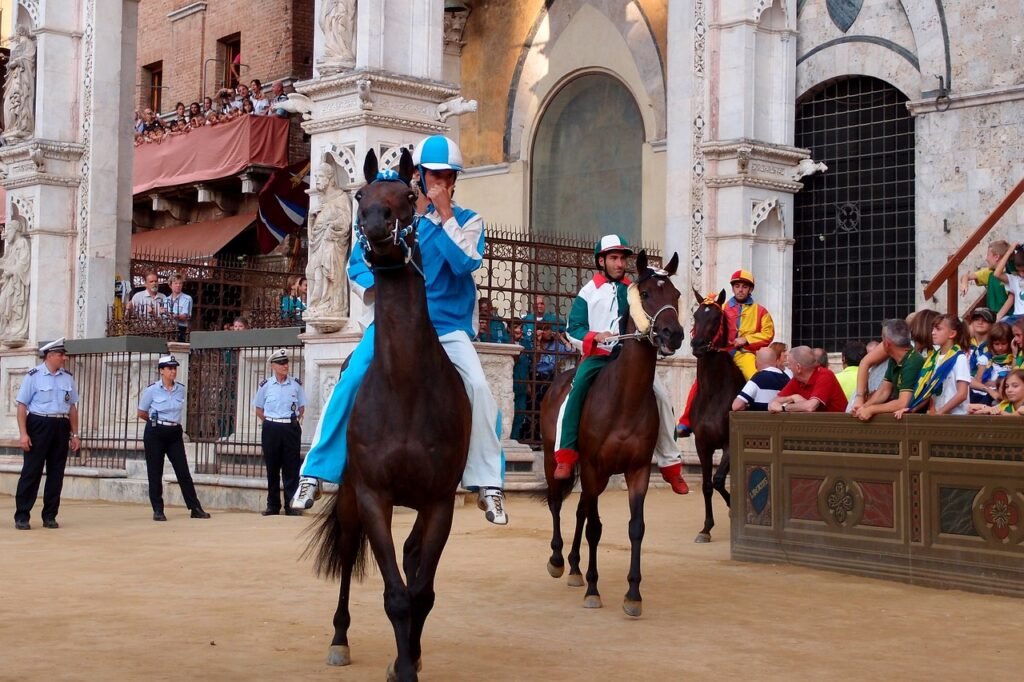
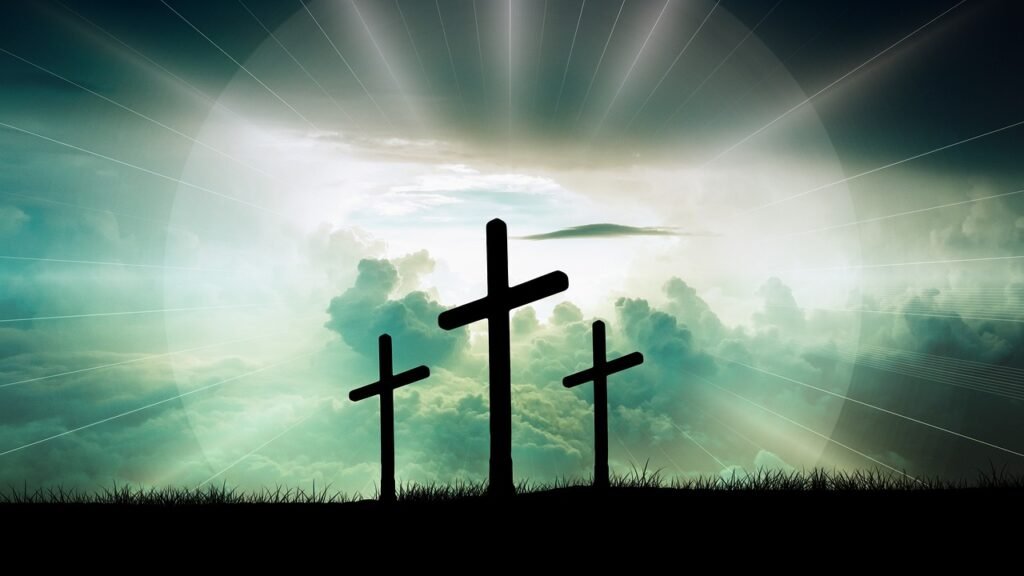
Religious Festivals
Easter Week (Settimana Santa)
Nationwide Celebrations
Easter Week, or Settimana Santa, is one of the most significant religious periods in Italy, celebrated with profound reverence and fervor. Across the country, cities and towns host processions, reenactments of the Passion of Christ, and special church services. Each region adds its unique touch, reflecting local traditions and customs.
Key Events in Rome and Vatican City
Rome and Vatican City become the epicenter of Easter celebrations, attracting pilgrims and visitors from around the world. Key events include the Pope’s Palm Sunday Mass in St. Peter’s Square, the solemn Good Friday Way of the Cross procession at the Colosseum, and the Easter Vigil on Holy Saturday. The highlight is the Pope’s Easter Sunday Mass and the Urbi et Orbi blessing, delivered from St. Peter’s Basilica.
Local Traditions Across Italy
Different regions of Italy observe Easter with their own unique traditions. In Sicily, the procession of the Mysteries in Trapani features lifelike statues depicting scenes from the Passion. In Florence, the Scoppio del Carro (Explosion of the Cart) involves a centuries-old cart filled with fireworks, ignited to ensure a good harvest. In Abruzzo, the Madonna Che Scappa in Piazza is a dramatic reenactment of the Virgin Mary’s encounter with the risen Christ.
Feast of Saint Anthony (Festa di Sant’Antonio)
Historical and Religious Significance
The Feast of Saint Anthony, celebrated on June 13th, honors Saint Anthony of Padua, a beloved Catholic saint known for his powerful preaching and miracles. The festival commemorates his life and works, particularly his efforts to help the poor and oppressed.
Celebrations in Padua
Padua, where Saint Anthony spent much of his life and where his relics are housed, becomes the focal point of the celebrations. Pilgrims flock to the Basilica of Saint Anthony to participate in religious services, processions, and to pay homage to the saint’s relics.
Activities and Events
The festivities in Padua include the solemn procession of the Saint’s statue through the city streets, accompanied by music and hymns. The day also features blessings of bread, a tradition rooted in Saint Anthony’s acts of charity. Additionally, various cultural and community events, such as concerts and fairs, add to the festive atmosphere.
Assumption of Mary (Ferragosto)
Historical Background
Ferragosto, celebrated on August 15th, marks the Assumption of Mary, a significant event in the Catholic Church commemorating the Virgin Mary’s ascent to heaven. The festival’s origins can be traced back to Roman times when it celebrated the harvest and the end of summer work.
Nationwide Celebrations
Ferragosto is a major public holiday in Italy, with widespread participation in both religious and secular activities. Many Italians take advantage of the holiday to enjoy the summer weather, traveling to beaches, mountains, or countryside for a short vacation.
Major Events and Activities
Major cities and towns host special church services and processions in honor of the Assumption. In Rome, the Pope leads a special Mass and Angelus in St. Peter’s Square. Ferragosto is also marked by various local festivals featuring fireworks, music, and traditional food. Coastal areas and lakeside towns are particularly popular destinations, where people gather for picnics, barbecues, and communal meals, celebrating the height of summer with family and friends.
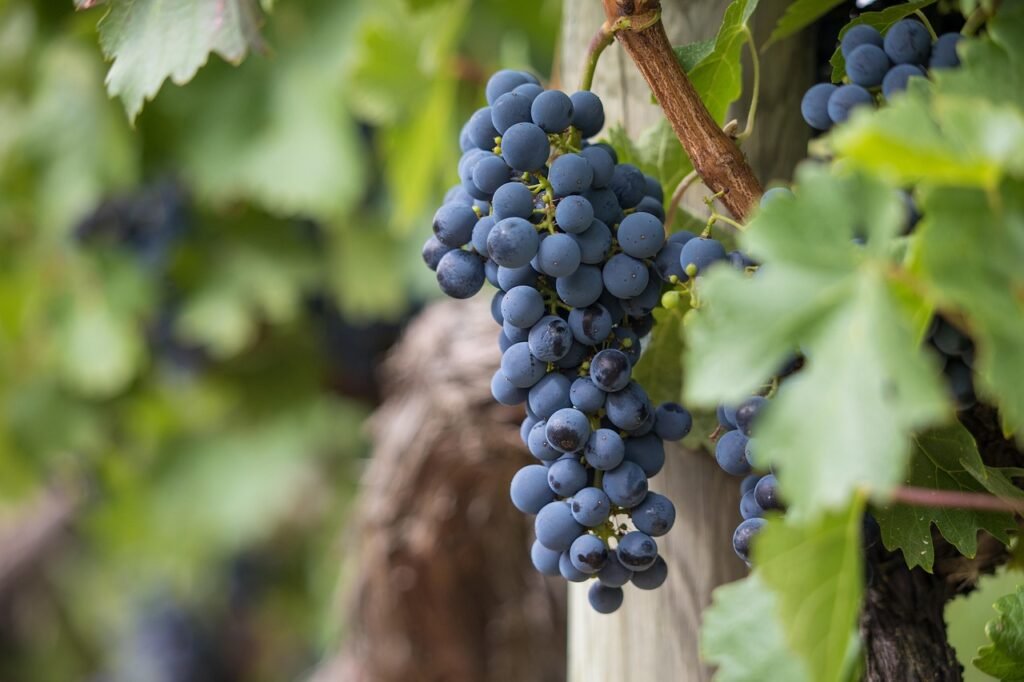
Food and Wine Festivals
Truffle Festivals (Sagre del Tartufo)
Regions Famous for Truffles
Italy is renowned for its truffles, particularly the prized white truffles of Alba in Piedmont and the black truffles of Norcia in Umbria. Other regions known for their truffles include Tuscany and Marche, each offering distinct varieties celebrated for their unique flavors.
Key Events and Activities
Truffle festivals, or Sagre del Tartufo, typically feature truffle hunting demonstrations, gourmet food stalls, and cooking classes. Visitors can taste truffle-infused dishes, from pasta and risotto to cheeses and oils. The festivals often include truffle auctions, where the finest specimens fetch high prices, and truffle fairs showcasing local artisanal products.
Cultural Significance
Truffle festivals celebrate the deep-rooted culinary traditions and local economies of the regions. Truffle hunting, often involving specially trained dogs, is a skill passed down through generations. These festivals not only highlight the gastronomic value of truffles but also preserve and promote the cultural heritage associated with this prized delicacy.
Wine Harvest Festivals (Vendemmia)
Regions Known for Wine Production
Italy’s diverse wine regions, including Tuscany, Piedmont, Veneto, and Sicily, are celebrated for their world-class vineyards and distinctive wines. Each region has its own vendemmia (grape harvest) traditions, reflecting local winemaking practices and culture.
Description of Harvest Celebrations
Vendemmia is a time of festivity and hard work, as communities come together to harvest grapes. Celebrations include grape stomping, wine tastings, and vineyard tours. Many wineries open their doors for special events, offering visitors a chance to experience the winemaking process firsthand, from picking grapes to tasting the freshly pressed must.
Major Wine Festivals
Prominent wine festivals during vendemmia include the Chianti Classico Wine Festival in Tuscany, the Douja d’Or in Asti, and the Vinitaly in Verona. These festivals feature extensive wine tastings, food pairings, and educational seminars. They are a perfect opportunity for wine enthusiasts to explore Italy’s rich viticultural heritage and sample a wide variety of wines.
Limoncello Festival
Historical Background
Limoncello, a lemon liqueur, is a beloved Italian digestif with roots in the Amalfi Coast. The tradition of making limoncello dates back to at least the early 20th century, with each family often having its own secret recipe. The liqueur is made from the zest of Sorrento lemons, alcohol, water, and sugar.
Celebrations in Amalfi Coast
The Limoncello Festival is primarily celebrated in the Amalfi Coast, particularly in towns like Sorrento, Amalfi, and Positano. The festival showcases the region’s famous lemons and the traditional methods of limoncello production. The picturesque coastal backdrop adds to the charm of the celebrations, attracting both locals and tourists.
Key Events and Activities
Festival activities include limoncello tastings, tours of lemon groves, and demonstrations of the liqueur-making process. Local markets offer an array of lemon-based products, from sweets and pastries to beauty products and ceramics. Cooking classes often highlight dishes and desserts incorporating lemons, providing a deeper appreciation of the fruit’s versatility. The festival also features cultural events, such as music and dance performances, celebrating the region’s rich heritage and vibrant community spirit.
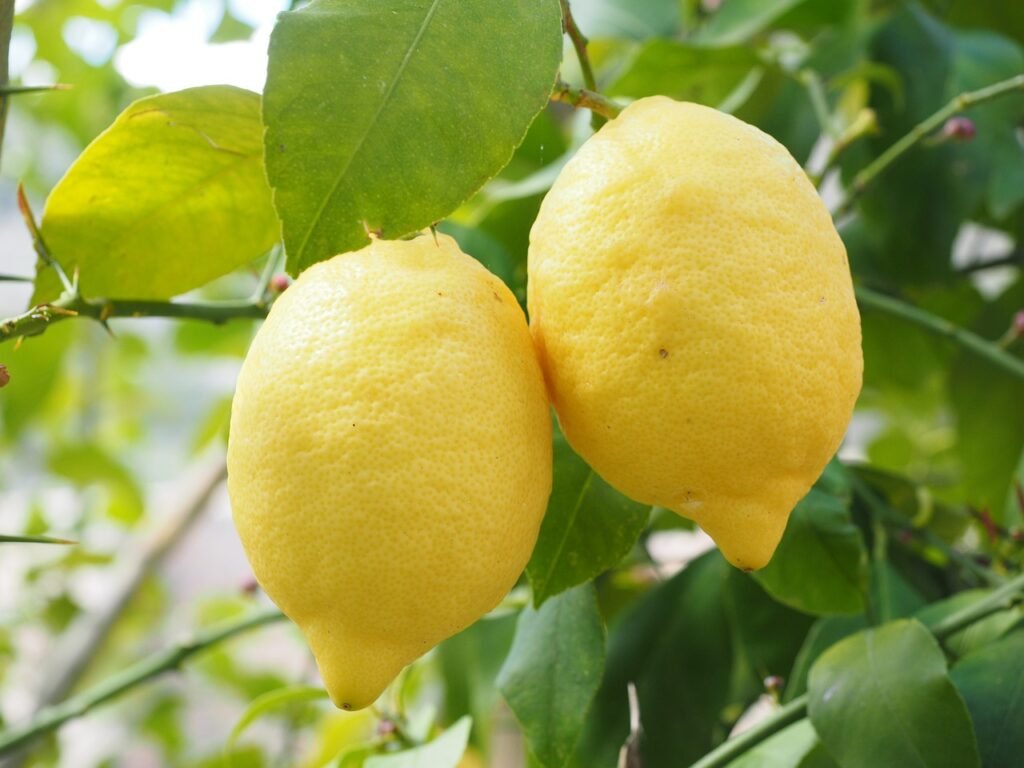
Need Flights?
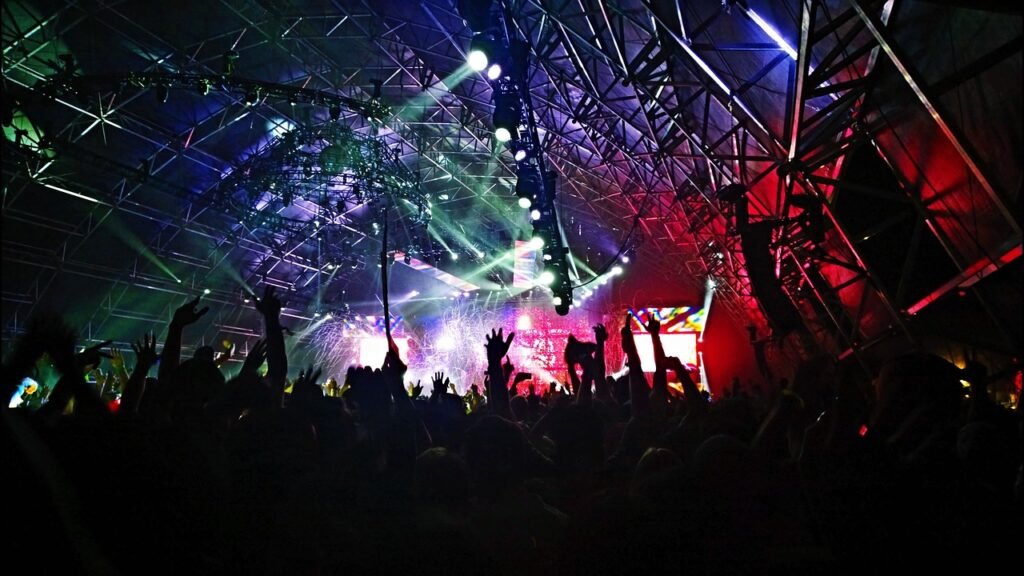
Arts and Music Festivals
Venice Biennale
Overview and History
The Venice Biennale, established in 1895, is one of the world’s oldest and most prestigious cultural events. Initially focused on contemporary art, it has since expanded to include architecture, cinema, dance, music, and theater. Held biennially in the Giardini and Arsenale areas of Venice, the event showcases cutting-edge artistic expressions from around the globe.
Key Events and Exhibitions
The Biennale features a main international exhibition curated by a selected director, national pavilions showcasing individual countries’ artists, and collateral events throughout Venice. Highlights include the Golden Lion awards for the best national pavilion and best artist, and special exhibitions like the Venice Film Festival, part of the Biennale’s broader cultural program.
Cultural Impact
The Venice Biennale plays a critical role in shaping contemporary art trends and fostering global artistic dialogue. It provides a platform for emerging artists and established creators to gain international recognition. The Biennale’s influence extends beyond the art world, contributing significantly to Venice’s cultural tourism and reinforcing the city’s reputation as a global hub for art and culture.
Umbria Jazz Festival
Historical Context
Founded in 1973, the Umbria Jazz Festival is one of Italy’s most renowned music festivals, held annually in Perugia, Umbria. Initially starting as a small event, it has grown into a major international jazz festival, attracting top musicians and jazz enthusiasts from around the world.
Description of the Event
The festival takes place over ten days in July, featuring performances in various venues throughout Perugia, from historic theaters and churches to outdoor stages in the city’s picturesque squares. The program includes a mix of jazz genres, from traditional and contemporary jazz to blues, soul, and fusion.
Notable Performances and Artists
The Umbria Jazz Festival has hosted legendary artists such as Miles Davis, Herbie Hancock, and Chick Corea. Recent lineups continue to feature a blend of jazz icons and up-and-coming talent. The festival’s inclusive atmosphere and high-quality performances make it a highlight in the international jazz calendar.
Festival dei Due Mondi (Spoleto)
Background and History
The Festival dei Due Mondi, or Festival of the Two Worlds, was founded in 1958 by Italian composer Gian Carlo Menotti in Spoleto, Umbria. The festival was conceived as a cultural bridge between Europe and America, celebrating the performing arts and fostering cross-cultural collaboration.
Key Events and Performances
Spanning over three weeks from late June to mid-July, the festival features a diverse program of opera, dance, music, theater, and visual arts. Key events include world premieres of new works, reinterpretations of classic performances, and collaborations between renowned international artists and local talent.
Cultural Significance
The Festival dei Due Mondi has significantly contributed to the cultural life of Spoleto and the international arts community. It serves as a platform for innovative artistic expressions and has helped launch the careers of many artists. The festival’s emphasis on high-quality performances and its picturesque setting make it a unique and enduring cultural event, attracting visitors from around the globe.
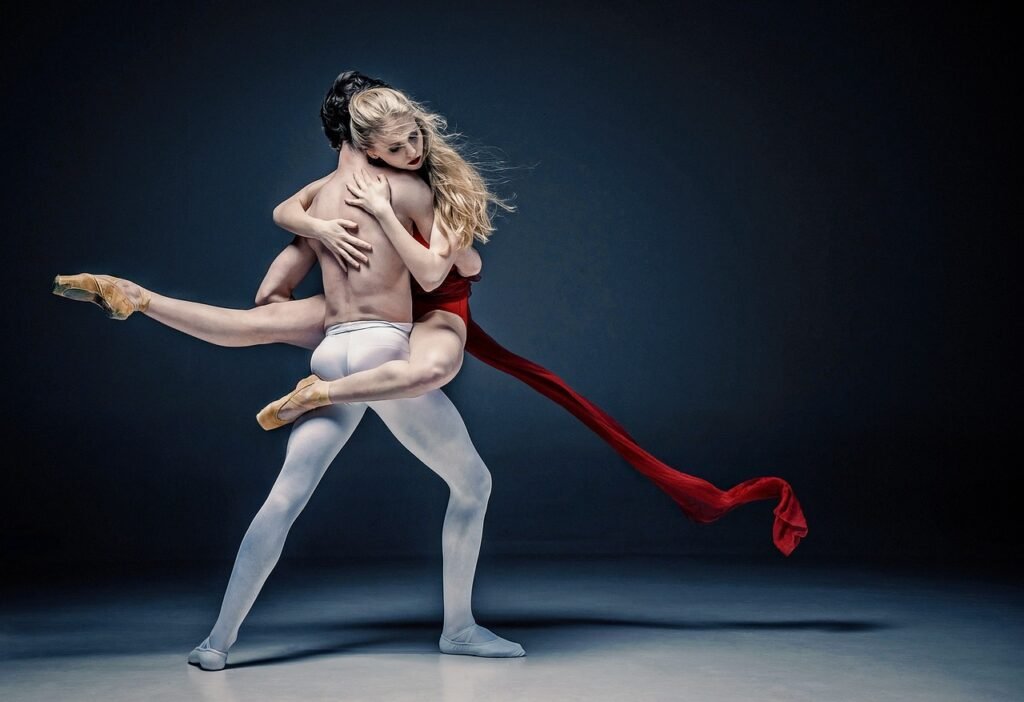
Local and Regional Festivals
Festa della Rificolona (Florence)
Historical Background
The Festa della Rificolona, or Festival of the Lanterns, dates back to the mid-17th century in Florence. Originally, it celebrated the eve of the Nativity of the Virgin Mary, when farmers and villagers would journey into the city for the religious feast and market day, carrying lanterns to light their way.
Description of the Festival
The festival takes place on the evening of September 7th, with children and adults parading through the streets of Florence carrying colorful paper lanterns on sticks. The event includes music, street performances, and stalls selling traditional foods and crafts. The highlight is the parade from Piazza Santa Croce to Piazza Santissima Annunziata.
Cultural Significance
Festa della Rificolona is a beloved Florentine tradition that celebrates community spirit and cultural heritage. It serves as a vibrant reminder of Florence’s historical connection to the surrounding countryside and maintains a festive atmosphere that unites residents and visitors alike.
Infiorata Festivals
Overview and History
Infiorata festivals are celebrated across Italy, with origins dating back to the 13th century. These festivals involve creating intricate floral carpets and designs on the streets, often during religious feasts, particularly Corpus Christi. The tradition combines artistic expression with religious devotion, using flowers to create stunning, ephemeral artworks.
Description of Floral Displays
The floral displays are meticulously crafted using petals, seeds, and other natural materials to form elaborate patterns, religious scenes, and symbolic designs. The process involves several stages, from sketching the design to carefully placing the petals to bring the artwork to life. The displays often cover entire streets and squares, creating a breathtaking spectacle of color and artistry.
Key Locations and Events
Notable Infiorata festivals include those in Genzano di Roma, Spello, and Noto. In Genzano, the Infiorata di Genzano features a large-scale floral carpet along the Via Belardi. Spello’s Infiorate di Spello transforms the town’s streets into a floral gallery. In Noto, the Infiorata di Noto is part of the spring festival, showcasing baroque-inspired floral designs. These events attract thousands of visitors, celebrating the artistic and communal spirit of the towns.
Sagra della Castagna (Chestnut Festival)
Regions Where It’s Celebrated
The Sagra della Castagna, or Chestnut Festival, is celebrated in various regions across Italy, particularly in Tuscany, Piedmont, and Trentino-Alto Adige. These areas are known for their abundant chestnut groves and long-standing traditions of chestnut cultivation and consumption.
Historical and Cultural Context
Chestnuts have been a staple food in Italy for centuries, especially in mountainous regions where they were a crucial source of sustenance. The chestnut festivals celebrate the harvest and the importance of chestnuts in local cuisine and culture. They often take place in the autumn, coinciding with the chestnut harvest season.
Activities and Events
Chestnut festivals feature a variety of activities, including chestnut roasting, tastings of chestnut-based dishes (such as chestnut flour bread, cakes, and soups), and cooking demonstrations. The festivals also include music, dancing, and traditional games. Markets and stalls offer local products, crafts, and fresh chestnuts for visitors to purchase. The Sagra della Castagna provides an opportunity for locals and visitors to enjoy the seasonal bounty and partake in regional traditions, fostering a sense of community and cultural pride.
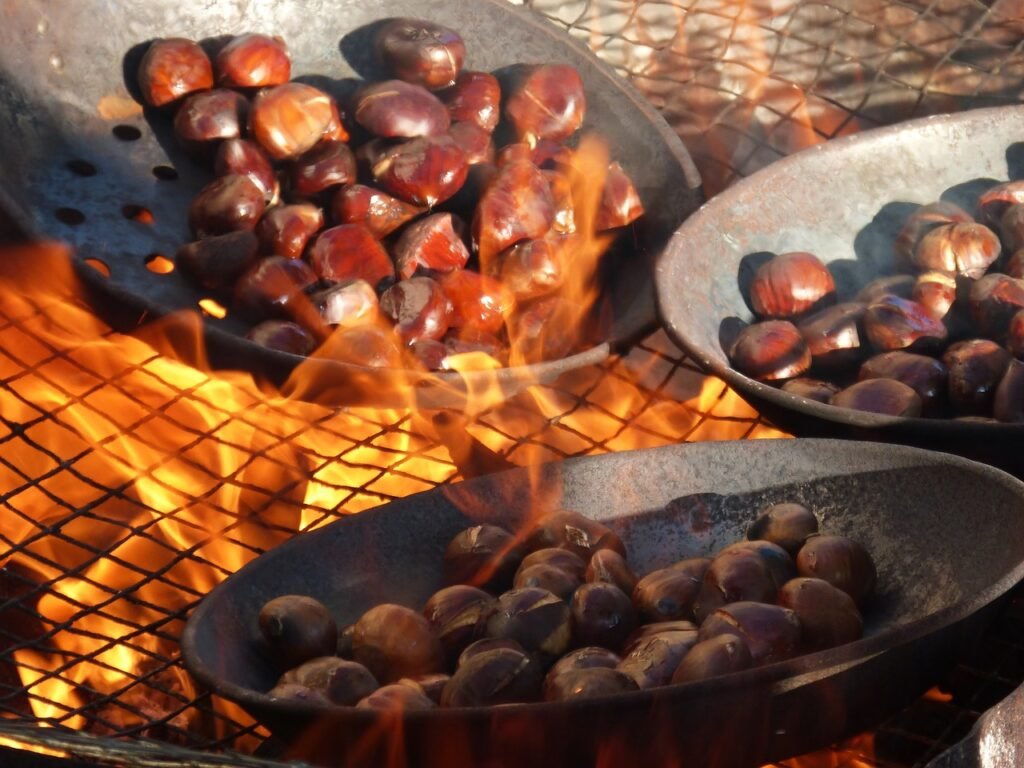
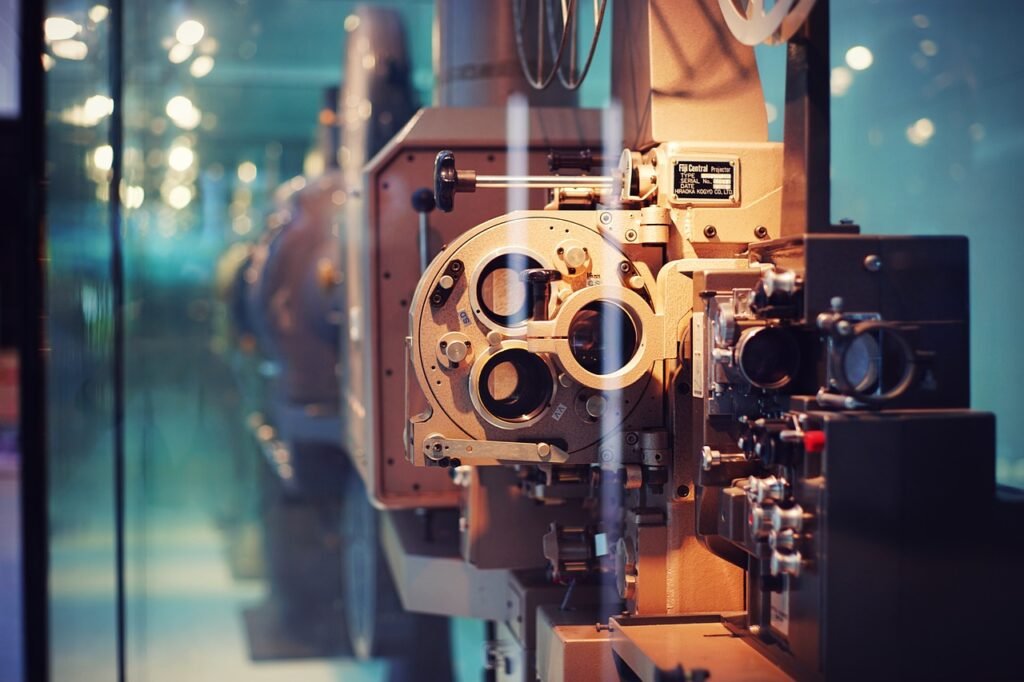
Modern and Contemporary Festivals
Milan Fashion Week
Historical Background
Milan Fashion Week, established in 1958, is one of the “Big Four” fashion weeks, alongside those in Paris, London, and New York. It occurs biannually, in February/March for the autumn/winter collections and in September/October for the spring/summer collections. The event has grown from a local showcase into a globally influential fashion extravaganza.
Key Events and Designers
Milan Fashion Week features runway shows, presentations, and exclusive events from Italy’s and the world’s top fashion houses, including Prada, Gucci, Versace, Dolce & Gabbana, and Armani. Emerging designers also gain a platform to present their collections, contributing to the vibrant and dynamic nature of the event. Highlights include the opening and closing shows, high-profile parties, and the presentation of avant-garde collections.
Global Impact
Milan Fashion Week is a cornerstone of the global fashion industry, setting trends and influencing fashion markets worldwide. It attracts buyers, media, celebrities, and fashion enthusiasts, making it a critical event for networking and business in the fashion world. The week-long event significantly boosts Milan’s economy and reinforces its status as a fashion capital.
Rome Film Festival
Overview and History
The Rome Film Festival, founded in 2006, is held annually in October. It takes place at the Auditorium Parco della Musica and various other venues across Rome. The festival aims to celebrate international cinema, providing a platform for a diverse array of films, from mainstream to independent productions.
Key Films and Events
The festival showcases a wide range of films, including feature films, documentaries, and shorts. It features competitive sections, retrospectives, tributes, and special screenings. Key events include the red carpet premieres, Q&A sessions with filmmakers, and the awarding of the prestigious Marc’Aurelio Awards. The festival also hosts industry events, panels, and workshops, fostering dialogue and collaboration within the film community.
Cultural Significance
The Rome Film Festival has quickly established itself as a significant cultural event, attracting international stars, filmmakers, and audiences. It enhances Rome’s cultural scene and offers a unique cinematic experience, blending the city’s historical charm with contemporary cinema. The festival also contributes to the promotion of Italian cinema on the global stage.
Lucca Comics & Games
Historical Background
Lucca Comics & Games, launched in 1966, is one of Europe’s largest comic book and gaming conventions. Held annually in the historic city of Lucca, Tuscany, it has grown from a small comic book fair into a major event celebrating comics, animation, games, and pop culture.
Description of the Festival
The festival spans several days, typically around the end of October and beginning of November. It takes over the entire city, with events held in various historical buildings, public squares, and temporary structures. The festival includes exhibitions, panels, workshops, cosplay contests, gaming tournaments, and meet-and-greet sessions with artists, writers, and game developers.
Key Events and Activities
Key events at Lucca Comics & Games include the cosplay parade, where enthusiasts showcase their costumes inspired by characters from comics, anime, and video games. The exhibition halls feature the latest in comics, graphic novels, and gaming. The Artists’ Alley provides a space for independent creators to display their work. Additionally, the festival hosts world premieres, exclusive previews, and signings by renowned artists and authors. Concerts and live performances add to the festive atmosphere, making it a comprehensive celebration of pop culture.
These modern and contemporary festivals highlight Italy’s dynamic cultural landscape, blending traditional elements with contemporary innovations, and attracting global audiences to experience the vibrant spirit of Italian creativity and entertainment.
Italian festivals, from the historic and religious to the modern and contemporary, offer a rich tapestry of cultural experiences. Their enduring appeal lies in the unique blend of tradition, community spirit, and vibrant celebration that they bring to life. Experiencing these festivals firsthand allows one to truly appreciate the depth and diversity of Italian culture. Whether it’s the grandeur of the Venice Biennale or the lively atmosphere of the Sagra della Castagna, Italian festivals are a testament to the country’s unparalleled cultural heritage. Dive into the world of Italian festivals and immerse yourself in these unforgettable celebrations.
USEFUL RESOURCES – ITALY
Accommodation: Booking.com
Activities: Get Your Guide
Flights: Skyscanner
Trains: Rail Europe
Bus: FlixBus
Car Hire: AutoEurope
Top Tips – Italy
Use Omio to compare buses versus trains, very useful.
For Hotels including self-catering apartments we use Booking.com, where you can filter by review score and many properties have a pay later/late cancellation policy should your plans suddenly change.
For travel insurance, we use and recommend using Staysure – specialists in over 50’s travel insurance, as we have always found them fair and easy to deal with.
Check our resources page for more budget tips and discounts from our days in transit!
Staying Safe
Travelling in Italy is usually safe but in many major cities petty theft and pickpocketing do occur, especially in crowded tourist spots or busy public transport. So keep your valuables safe and out of sight.
If you have an emergency, dial 112 for assistance.
Of course, the key thing is to have comprehensive travel insurance coverage to protect against, cancellations, theft, illness etc.

